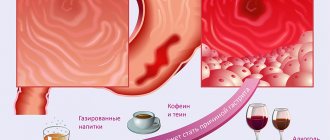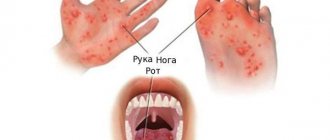About the doctor Photos before and after Videos Prices Clinic Reviews
Aziza Usmanova - Ph.D., dermatovenerologist-cosmetologist, specialist in non-surgical facial rejuvenation.
Cicatricial deformities of the face, neck or body occur as a result of soft tissue injuries, deep burns or extensive inflammatory processes, and also become a consequence of plastic surgery. Their cosmetic unattractiveness greatly disturbs patients and often becomes the reason for turning to specialists. In more complex cases, the appearance of scars also leads to serious functional impairment. For example, scars on the eyelids impair visual function, scars in the lip area can impede speech, and scar deformities of the anterior surface of the chest lead in some cases to impaired development of the mammary glands.
To eliminate such serious defects, the help of a qualified specialist is required. Based on my personal practice, I can say that scar removal is a popular service. Patients often come to me with a request, if not to remove them completely (and this, alas, is simply impossible), then at least to minimize the visualization of the scars. The effectiveness of the measures taken is determined by many factors: what is the nature of the scar, what caused its formation, how quickly the patient sought help, etc. In addition, one should not discount the individual characteristics of each patient, which may affect the nature of healing and the final results.
Today I want to present an overview of surgical and non-surgical techniques that allow qualitative removal of a scar, and also talk about the scars themselves - the features of their formation, “life” and classification.
Scar tissue analysis
The main goal pursued by a specialist involved in the treatment of scars is optimal camouflage of a cosmetic defect. I first inform patients that it is impossible to completely get rid of the scar, although there is every chance of improving its aesthetics. The final result depends on many factors:
- location and orientation of the scar;
- volume of damaged skin surface;
- scar localization;
- patient's age;
- the general condition of his body;
- genetic predisposition to the formation of pathological scars;
- wound closure technique;
- the presence of complications of the early process;
- the nature of the injury that caused the scar to form.
When choosing a scar removal technique, the mechanism of scar formation must be taken into account. Scars resulting from blunt trauma, a gunshot wound, or burns involve a large volume of surrounding tissue in the process, unlike postoperative scars. To preserve the maximum possible volume of viable tissue, work with the scar should be gentle.
Etiology of cicatricial deformation of the bladder neck
The urethra neck is an anatomical formation formed by its lower, narrowed part, which passes into the urethra. Its scar deformities can be acquired or congenital. Most often they are secondary, developing against the background of other diseases or under the influence of certain factors. Experts identify several factors that can lead to deformation:
| Initiating factor of deformation | Manifested by what? |
| Surgical intervention for urological diseases |
|
| Inflammatory processes of the urinary system | Cystitis and prostatitis, occurring in a chronic form, provoke the formation of dense connective tissue in the affected areas and the development of deformities. |
| Anatomical features of the structure of the bladder wall | The connective tissue in the area of the bladder triangle may not be loose enough, unable to provide sufficient plasticity and extensibility of the mucosa, which is why deformations appear. |
The deformation is based on the intensive growth of tissues in the process of their regeneration after damage of various natures. As a result, sclerotic changes develop, caused by disruptions in metabolic processes in the organ wall, inflammation or cellular degeneration. Also, the reasons may lie in disorders inherent in prostatic hyperplasia of a benign nature or the influence of an iatrogenic factor.
Classification of scar deformities
Modern medicine offers the following classification of scars.
- A normotrophic scar is characteristic of superficial wounds and burns, scratches, abrasions and skin incisions by a surgeon during surgical interventions. After the wound has healed, it is almost invisible and does not rise above the surface of the skin. Over time, such a scar becomes almost invisible and is difficult to notice with the naked eye. During surgery, this result becomes possible due to the surgeon making tissue incisions along the “natural” folds, taking into account the force lines of the skin.
- An atrophic scar appears as a result of minor damage to the skin and skin-fat tissue. For example, after acne, furunculosis. This scar is whitish in color, usually wide and may be slightly retracted into the skin.
- A hypertrophic scar is rough, dense, rising above the surface of the skin. It appears as a result of deep burns, lacerations, “bitten” wounds, as well as the lack of specialized care during the treatment of acute trauma, inflammation or suppuration in the wound, constant traumatization of the scar, and a genetic predisposition to active scarring.
- A keloid scar looks like a tumor, bright pink or bluish in color, lumpy and dense, rising above the skin like a mushroom. Its base is larger than the area of the injury. In this case, the patient complains of pain, burning, and a feeling of expansion in the painful area. The nature of the appearance of such scars is unknown.
How does a woman feel when her cervix is deformed?
The inverted mucosa is affected by the acidic environment of the vagina, which causes inflammation, erosion, and the formation of vaginal-cervical fistulas. Isthmic-cervical insufficiency occurs - the tissues become weak and cannot support the fetus during the next pregnancy. With severe deformation, conception is impossible due to the difficulty of sperm penetration into the uterine cavity.
The tissues of the cervical canal, normally covered with protective mucus, remain unprotected: a “gate” for infections is created. Microbes easily penetrate the uterus from the vagina, causing cervicitis and endometritis. Signs of infection are disruptions in the menstrual cycle, pain in the lower abdomen and lumbar region, copious foul-smelling discharge that irritates the genital mucosa.
Deformation, shortening of the cervical part of the uterus, rough sutures cause pain during sexual intercourse. Narrowing of the cervical canal leads to retention of menstrual blood in the uterine cavity and new inflammatory processes.
The doctor determines cicatricial changes in the cervix caused by postpartum tears during a vaginal examination and colposcopy. In gynecological speculums, rough sutures and everted areas of the mucous membrane are visible.
Non-surgical methods for scar removal
Injection, physiotherapeutic (including the use of lasers, etc.) and surgical methods are used to treat scars. The first two are usually used to solve the problem at an early stage of scar formation - up to six months, while surgical correction is possible and recommended in a later period. The main indication for such a measure is a violation of some vital functions, as well as cosmetic defects that do not lead to functional disorders, but negatively affect the psycho-emotional state of the patient.
First, let's look at non-surgical methods for treating scars, in particular dermabrasion and laser resurfacing. These cosmetic procedures are aimed at removing the superficial layers of the skin (epidermis and papillary dermis), which makes it possible to change the structure of the scar in order to further interface it with the surrounding healthy skin.
Dermabrasion
Dermabrasion is a cosmetic procedure performed using a special abrasive device with a diamond tip or cutter. The main purpose of this procedure is to remove the upper layers of skin by excision of the epidermis. As the wounds left after the procedure heal, the epidermis layer is renewed, and the skin becomes more even and smooth.
The results largely depend on factors such as the speed of rotation of the nozzle, the method of scar excision chosen by the cosmetologist, as well as the duration and intensity of the procedure. Most often, dermabrasion is used to eliminate defects in the skin of the face and other parts of the body.
Why do severe postpartum cervical ruptures and deformation occur?
The content of the article
Mild cervical ruptures are normal during childbirth; they heal quickly and therefore do not require treatment. Severe ruptures are the result of incorrect behavior of the woman in labor (early pushing), illiterate or traumatic obstetric care with the use of obstetric forceps or a vacuum extractor, rapid or late labor.
The cervix ruptures for other reasons, for example, if a woman has already had a childbirth with stitches.
When several factors combine, severe cervical ruptures occur that are difficult to stitch. Inexperienced gynecologists apply rough or uneven sutures. And if childbirth occurs suddenly, in unsuitable conditions, the woman is left without medical care at all. As a result, the cervix becomes deformed - it thickens, shortens and bends, and the internal mucous membrane turns outward.
Laser resurfacing
Laser resurfacing is usually performed using a carbon dioxide or erbium laser. Theoretically, laser resurfacing has several advantages over dermabrasion, as it provides increased collagen reorganization. However, the thermal damage associated with laser resurfacing makes the depth of penetration predictable and controllable. In addition, it became possible to selectively act on the tissue around the depressed areas, increasing the degree of alignment of the skin plane.
Diagnosis of cicatricial deformation of the bladder neck in CELT
CELT urologists have ample opportunities for diagnostic studies, allowing to identify cicatricial deformation and at the same time exclude other possible causes of overlap.
| Diagnostic technique | Peculiarities. What gives? |
| Urodynamic studies | Used before other instrumental studies to identify the presence of obstruction. |
| Retrograde urethrography | Allows you to determine the obstacle to the flow of urine into the cervix. Carried out with contrast. |
| Ultrasound scanning | Determines the features of the anatomical structure of the bladder and its structures, as well as the ureters and prostate gland. |
| MSCT | Provides a three-dimensional model of the bladder and neck to determine the presence of deformations and the exact location of their localization. |
| Endoscopic examination | Accurately identifies the affected area, makes it possible to assess the condition of the mucous membrane and the degree of scar deformation. During the process, a biopsy may be performed to collect samples for histology. |
Surgical methods for treating scars
Depending on the nature and location of scars, their extent to adjacent areas, as well as the age and gender of the patient, certain methods of surgical treatment are used. These are local or combined plasty, plasty with flaps on a pedicle, free skin plasty using full-thickness grafts and flaps on microvascular anastomoses, and the tissue dermatension method, in which replacement of an extensive defect occurs in several stages using a tissue expander to create a supply of skin.
The simplest and most common method is to excise tissue deformed by scars, mobilize healthy skin and suturing the edges of healthy skin. When the scar is not only rough, but also retracted, an effective method of “raising” sunken areas on the skin using special injections based on a biological or synthetic substance is used to correct it.
If necessary, plastic surgery can be performed with local tissues using geometric shapes, such as plastic surgery with intersecting triangular flaps.
However, with large skin lesions, it is necessary to use other, more effective methods for such cases. This is caused by a limited supply of tissue around the defect area and the danger of secondary deformations.
Such methods include the oldest plastic surgery of a skin flap on a feeding pedicle. Original varieties of this method, which include the “sliding flap,” allow the surgeon to cope with the most complex tasks of plastic replacement of large areas of skin, for example, on the cheek.
The most widely known method is plastic surgery using free skin flaps. It is also called “skin grafting”. When using it, only your own skin takes root. Artificial or donor skin transplanted onto the burn surface can only temporarily replace it, performing part of the functions of one’s own skin.
As a result of surgical removal of scars, the patient subsequently gets rid of the at least aesthetic problem that tormented him forever and receives psychological rehabilitation. Repeated surgery is not required, the result lasts for life.
In reconstructive surgery, full-thickness skin flaps are often used. Sometimes - with the use of complex grafts that include other tissue. For example, to restore a defect in the ear or wing of the nose, the surgeon can use a fragment of the auricle of the other ear, taken together with cartilage. The site where such a flap is removed is sutured and after it has healed, traces of the surgical intervention are practically invisible. By the way, the viability of full-thickness skin flaps depends on the blood supply capabilities of the place where they are transplanted. To restore blood supply to a problem area, a microsurgeon usually sews a flap taken from a separate part of the body into the vascular system of the defective area, and thereby solves the problem.







